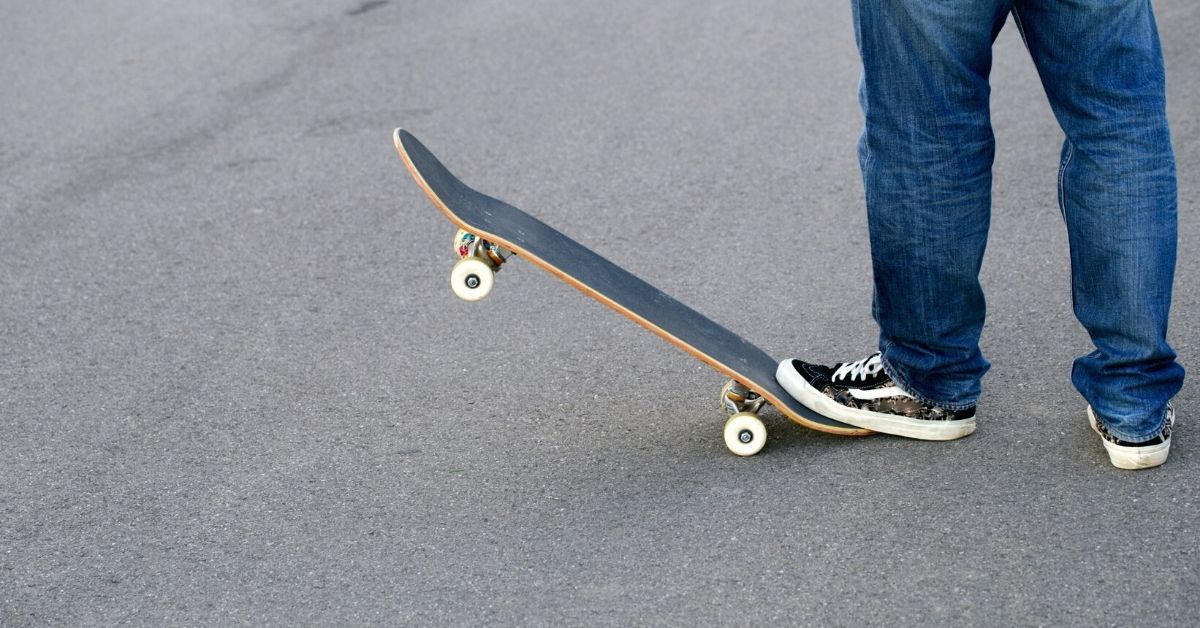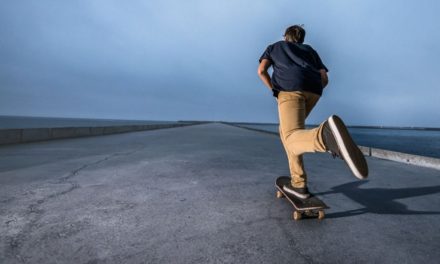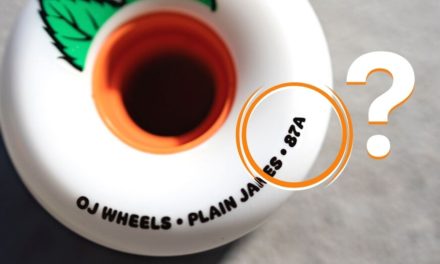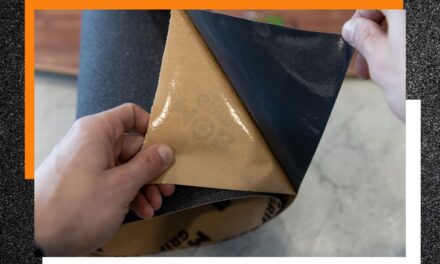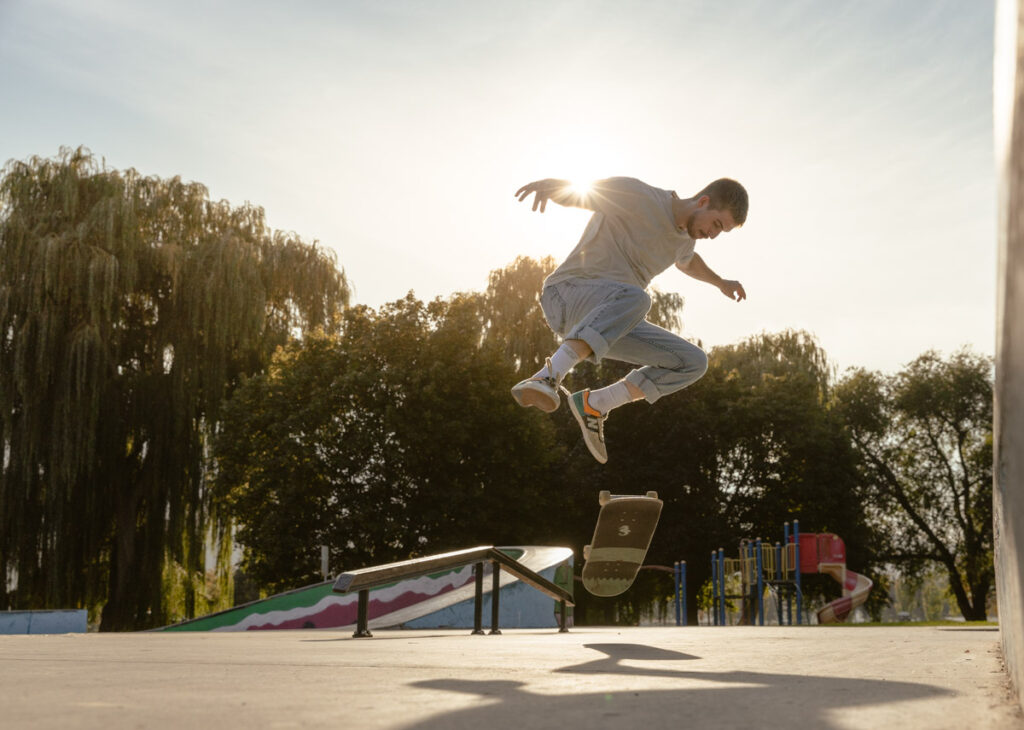A lot of us start skating as kids, then somewhere along the way we stop completely as life, jobs, and whatever else takes focus. However, if you’re like me, the thought of popping tricks and grinding rails is a feeling you suddenly long for again. You miss that euphoria of landing new tricks and the camaraderie between skaters; so you start thinking about how to get back into skateboarding again.
Regardless of how much time you have taken off, getting back into skateboarding is largely the same for everyone. After taking a 9-year break from skateboarding myself, there are a few things I quickly learned that helped me to get back into my skating (without injuring myself).
So let’s break down 10 tips to ensure you get back into skateboarding in a way that’s actually enjoyable.
Because trust me, you will not be as good as you remember.
How To Get Back Into Skateboarding
To get back into skateboarding after a long break, start by cruising around to feel comfortable rolling and pumping again. Once comfortable, start by progressively building your base of tricks from something like a manual or ollie, and expanding into shuvits, board slides, and 5050 grinds.
1. Start By Cruising Around
The first thing to do after a long break from skateboarding is to get out and cruise on your board. No matter how confident you feel, it’s safe to assume you won’t be as solid on your board as you once were. By cruising around you can get a better feel for pushing fast, turning, and just getting used to how your skateboard feels.
You could start by just rolling around town or heading to a skatepark just to roll around on the banks. When I was getting back into skateboarding, I felt a lot more wobbly than I did previously. So although I could ride fine, moving quickly while also trying to pop a trick was something I majorly struggled with.
However, taking a week or two just to cruise really helped me to get my bearings as I started feeling more confident on my board again. I’m sure this will do the same thing for you!
2. Take On A Beginners Mindset
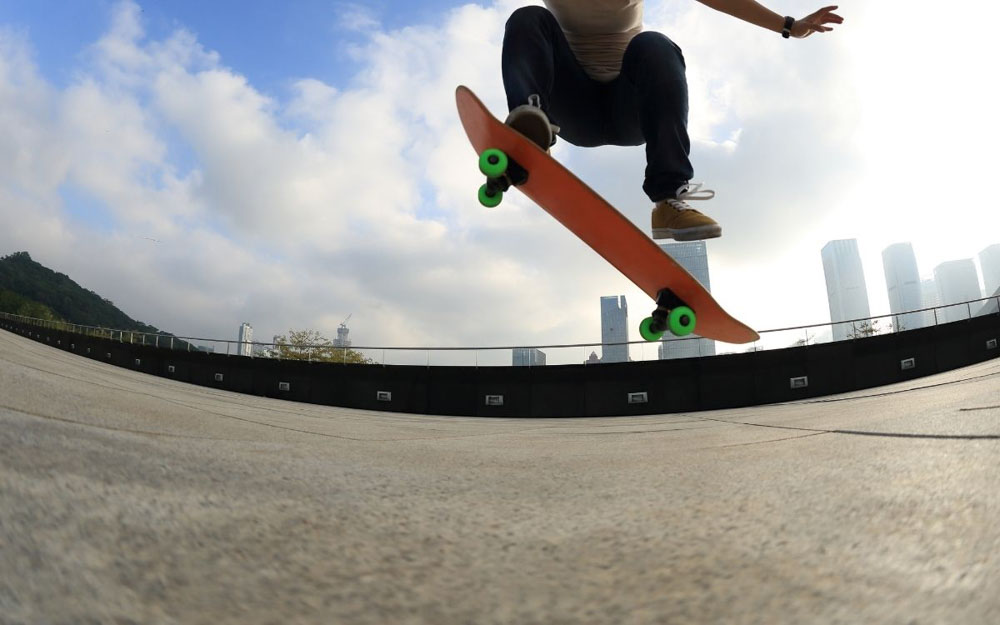
Whether you like it or not, you’re going to suck compared to your previous self. Comparing yourself to what you used to do, or how easy certain things felt will make you go crazy as you get back into skating. This only creates a negative feedback loop since no matter how much you progress at first, you still won’t feel happy because you’re constantly comparing.
That’s why taking on a beginner’s mindset is so important as you get back into things. Accept the fact that you may be starting from square one, and be proud of the small progress you make.
For example, I used to love ledges and found them relatively easy to skate. Fast forward nearly 10 years and my 25-year-old self is struggling to pop an ollie high enough to get onto one.
In this situation, I could have gotten annoyed, but instead focused on getting my ollies down until I could get onto something smaller like a curb. Although insignificant in comparison, I was thrilled just to get onto a curb and feel like I was making some level of progress.
When you have a beginner’s mindset, any piece of progress feels like a win. When you feel like you’re actually accomplishing something, it’s easier to stay motivated to continue to skate!
3. Start Slowly
You probably got the urge to get back into skating after remembering how fun a certain trick felt. So naturally, you might want to immediately try to land that trick again.
Unfortunately, if you’ve had a long break, it’s probably not the best idea to hit the ground running since it’s a lot easier to get injured.
Instead, start slowly and build your tricks progressively.
Start getting confident with ollies or shuvits before you start going straight to flip tricks.
Start skating a mini ramp before sending it down the deepest part of the bowl.
By understanding that your body may not quite be in line with what your mind wants to do, you can slowly work your way through tricks without increasing your chance of injury.
4. Make Sure To Practice Often
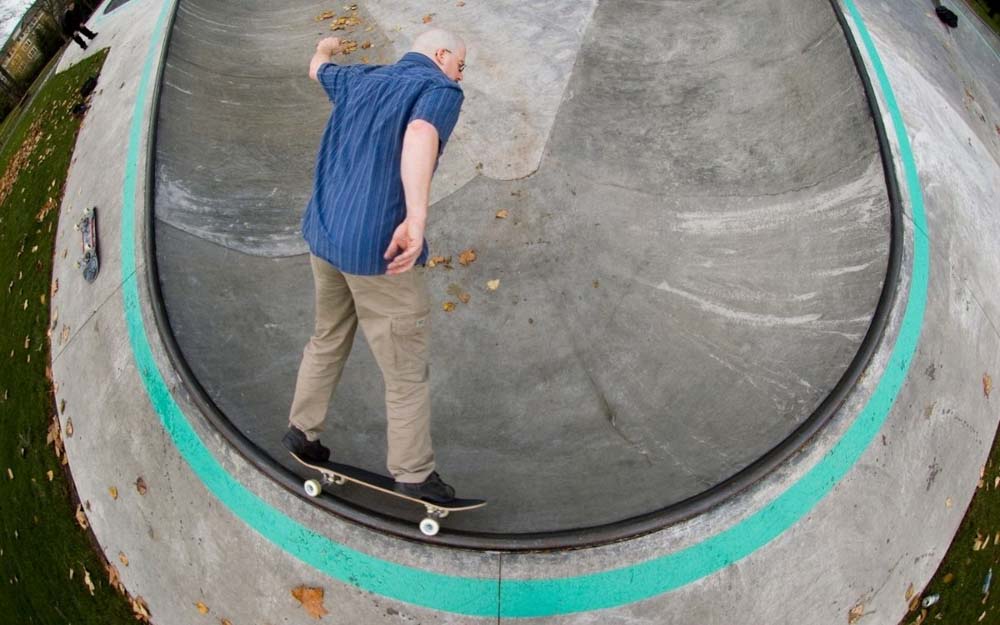
One of the most important things with getting back into skateboarding is to actually practice. It’s hard as life and work take up your time, but if you’re only skating once or twice a month, you probably won’t see much progress. That’s why for the first month or two, try to go skating 2-3 times per week just to build your muscle memory again.
After a couple of months of regular practice, your rebuilt skills will largely stay even if you only skate once every couple of weeks. What’s important is that you start building your foundation again so that you feel extremely comfortable rolling around and popping a few tricks again.
For practicing, you don’t necessarily need to go to a skatepark, you could even roll around on your street and practice flat ground after work. Take a look at your schedule and see where you could fit a 30-60 minute skate session into your day.
I find going after work is one of my favorite times to practice since skating helps to clear my head and decompress from the day.
So stopping by at a skatepark on your way home is what I found easiest for getting some extra practice in!
5. Don’t Have A Competitive Attitude
I remember as a teenager skateboarding could get very competitive. You saw your friends land a new trick, and you immediately wanted to do the same. If everyone was sessioning a spot a little out of your league, you still would give it a try because you wanted to compete.
As you get older, this competitive attitude doesn’t really have a place and can ruin the fun of skateboarding. It’s important to laugh at things you’re finding hard rather than getting excessively frustrated you can’t land something.
By not getting phased by things you will still enjoy your skate session, even while you’re having an off day. If you have a competitive attitude as you’re getting back into skateboarding, you’re guaranteed to have less fun.
6. Check Your Old Skateboard Before Using It
If it’s been a long time since you used your skateboard, make sure to take a look at the bearings, deck, wheels, and trucks before skating it. Especially with your bearings, it’s possible for them to feel a bit less smooth after a long time in storage. So once you get out to skate, you’ll be stuck with a slow skateboard that’s no fun to ride.
So be sure to take the time to clean and lubricate your skateboard as necessary. Check your trucks and bushings to see how they feel and if they should be tightened. See if your deck has any cracks, or if the tail is badly damaged. In some cases, it might be worthwhile just to get a new deck altogether.
After a quick look over, you at least know that your skateboard won’t suddenly stop rolling or turn uncontrollably once you get onto it.
And while riding a skateboard that is still in decent condition, you’re going to have a lot more fun as well.
7. Wear Pads If It Makes You Feel More Comfortable
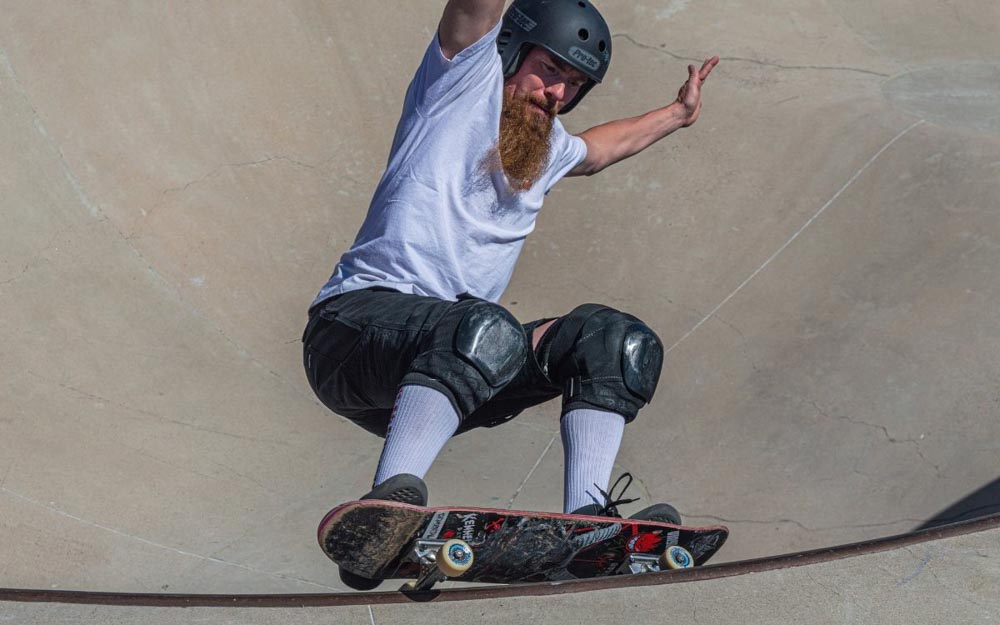
As a kid wearing pads might not be very cool, but as an adult, safety can be pretty awesome. For a lot of people, an injury could mean time off work that just isn’t feasible. So by padding up, it can give you a lot more peace of mind as you’re starting to try some new tricks again.
I find myself regularly wearing wristguards as a sprained or broken wrist would be pretty detrimental to what I do. If I’m skating bowl, I’ll often pad up completely since I learned my lesson after a few solid spills I wasn’t expecting.
To add to this, concrete sure feels a lot harder as you get older. It really is true when people say you don’t bounce back like you used to, and taking a slam while getting back into skateboarding proves it.
Luckily by padding up, you can avoid being in pain for a week afterward and keep skating without any problems!
8. Apply The Rule Of 3 After Landing A Trick
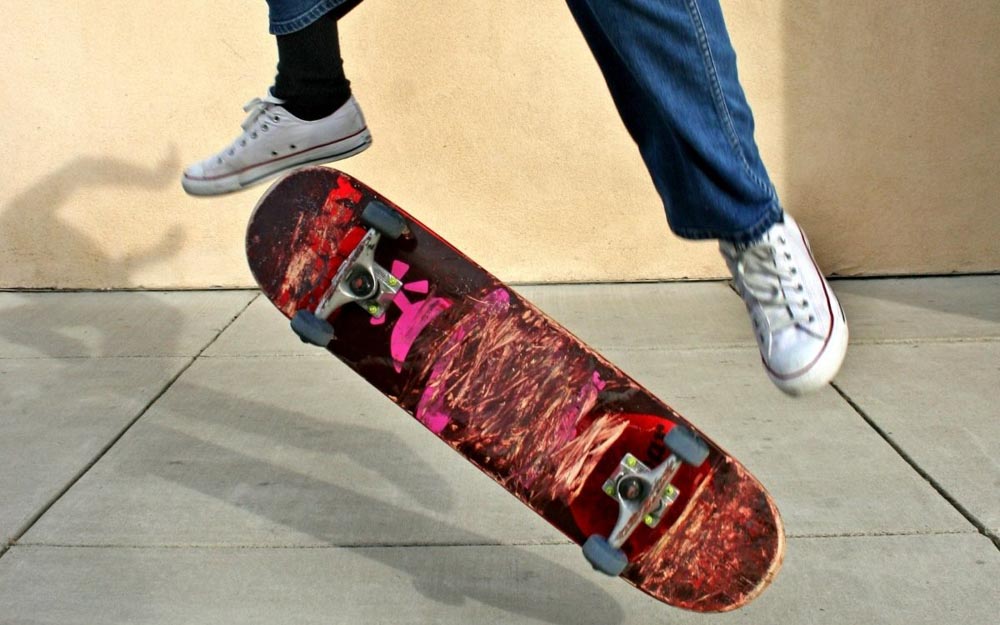
The “Rule Of 3” is a not-so-technical term my friends and I used to use back in the day. I’ve found it exceptionally useful while getting back into skateboarding. The rule goes like this:
If you land a new trick, you must land it three times in a row before you say you can do it.
As you’re getting back into things, this basically means you have to practice every new trick you land to the point you can do it with consistency. This repetition does wonders as you’re starting to land old tricks again and helps with feeling more confident on your board.
Besides feeling more confident, it helps intimidating tricks feel a lot less scary since you feel more and more sure about them when forcing yourself to repeat them.
9. Don’t Try Anything You Aren’t Comfortable With
One of the biggest things to prevent injury while getting back into this is to only skate what you’re comfortable with. it doesn’t matter what your friends are skating, it doesn’t matter what you used to skate, it only matters what feels in your comfort zone currently.
Typically when you try to huck yourself down something that’s beyond your comfort level, you’re less likely to commit. With lack of commitment also comes a higher chance of getting injured.
Instead, only step a little bit outside of your comfort zone to an area you can progress, without feeling over your head. As you gradually push your comfort zone in small, attainable ways, you’ll find what you’re comfortable with begins to change.
Going off of what I mentioned earlier, taking things slowly is most important to actually enjoy what you’re skating without hurting yourself.
10. Focus On Building Your Base
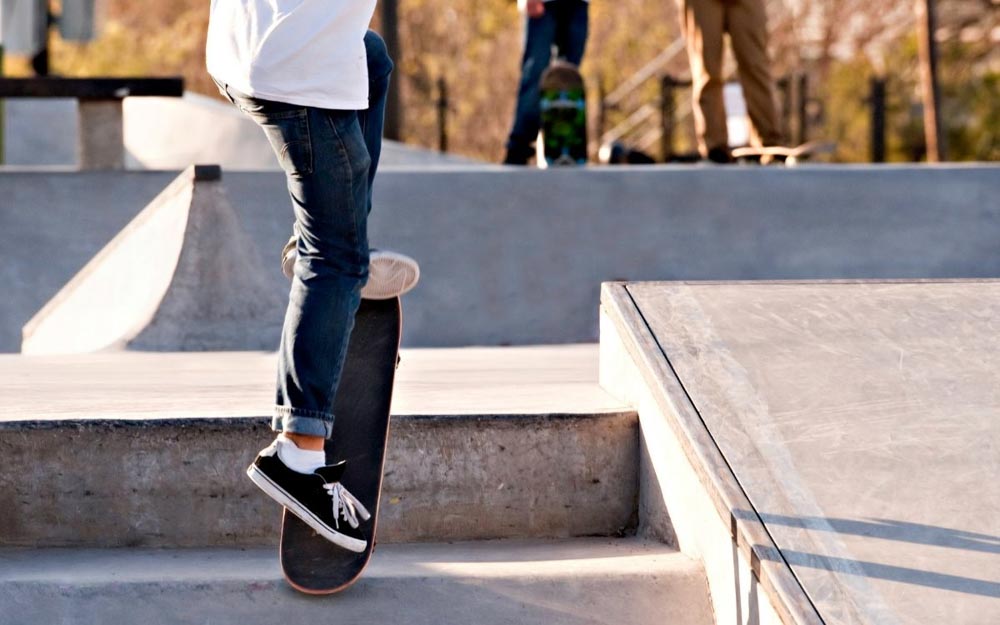
Lastly, it’s important to get all your base tricks down when you get back into skateboarding. Make sure your ollies are effortless, along with other basic tricks like shuvits, nollies, board slides, and 5050 grinds. Having a solid base of tricks makes progression a lot easier, but also offers some things to fall back on no matter where you’re skating.
In my experience, if you can pop a high ollie, boardslide a rail, and 5050 a ledge, you can have a ton of fun at just about any skatepark. These tricks allow you to skate nearly any feature (of reasonable size of course) and have a ton of fun doing it.
Besides these basic tricks, also consider expanding the type of skateboarding you do. If you only focused on street in the past, start skating some transition too. Although different, a lot of skills and movements can transfer over, further building your base as you get back into skating.
Getting back into skateboarding after an extended break can feel equally exciting and nerve-racking. However, by taking things slow and building your skills progressively, you’ll be surprised how quickly you catch back onto things. Just remember to keep a beginner’s mindset and feel ok with not being as good as you once were. Instead, just focus on having the most fun possible!
Happy Shredding,
Brendan 🙂

